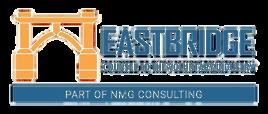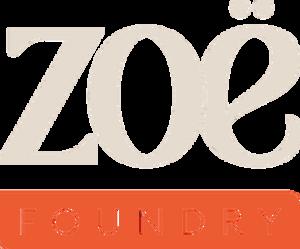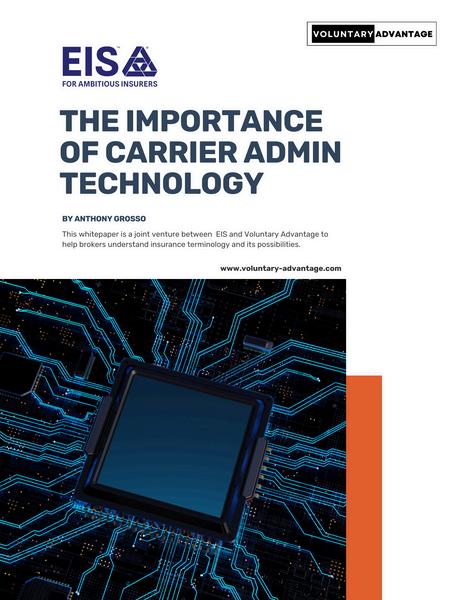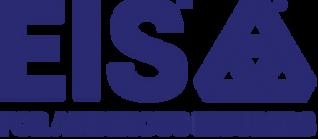Voluntary Benefits Voice








Steve Cain



Editors
Heather Garbers | Trevor Garbers
Marketing Director
Marin Daniel
For Media and Marketing Requests Contact:
Heather@voluntary-advantage com
Trevor@voluntary-advantage.com
Mailing Address
10940 S Parker Rd #257
Parker, Colorado 80134

Steve Clabaugh CLU, ChFC
Jennifer Daniel Aflac

Jack Holder EBIS

Paul Hummel UHC

Rachel McCarter Mercer

Mark Rosenthal PwC

Seif Saghri BenefitHub
Tim Schnoor Birch Benefits
Sydney Consulting Group A d v i s o r y B o a r d


Hunter Sexton, JD, MHA

Get Smart! How Carriers Can Use Artificial Intelligence and Innovative Technology to Improve Customer Experience
The Future of Benefits Technology: Innovations in Automation, AI, and Integration
Relational Leadership and The Special Theory of Relativity


Bridging the Gap: How Real People Enhance AI in Employee Benefits

The Digital Transformation of Employee Benefits: Early-Stage Trends
The theme for this month’s publication is digital innovation in the benefits industry and this month is February, the month of “love”, being that it includes Valentine’s Day So let’s combine the two and talk about the things I love about digital innovation in our industry today
One thing I love is that we are seeing a shift in focus from a race to the lowest cost to a race towards a better customer experience AI, chatbots, mobile apps, and digital platforms are no longer just efficiency tools; they’re becoming essential in creating seamless, userfriendly interactions that improve access to benefits
I also love how technology is making benefits more personalized. Benefits have never been a one-size-fitsall solution, and today’s digital tools allow us to tailor offerings to meet individual needs, ensuring employees get the support that’s most relevant to them.

Another thing that makes me weak in the knees is the rapid evolution of digital tools that enhance benefits comprehension and engagement. The ability to connect an entire benefits ecosystem where one claim submission can trigger additional support, such as hospital indemnity claims or through employee assistance programs ensures that members maximize the benefits available to them when they need them most.
To finish, the last feature of technology that really warms my heart is that it is allowing us to deliver on the promises that we make in this industry – that administration won’t be a nightmare, that claims will be paid, that members can receive information about their coverage in the format in which it is most helpful to them Digital innovation is making benefits more transparent, accessible, and user-friendly It’s not just about modernizing the system; it’s about delivering a better experience for the people who rely on it
Technology has evolved beyond being just a tool it’s now a vital connection point, bringing people closer to the benefits they need in smarter, more accessible, and more meaningful ways I just love seeing how digital innovation is shifting our industry to truly engaging experiences, where benefits aren’t just available, but are understood, utilized, and valued
As we continue to push forward, I hope we stay focused on what matters most using technology not just to streamline processes, but to create better, more human-centered experiences At its core, benefits are about people, and when technology is harnessed to improve their journey, everyone benefits

By Eastbridge Consulting Group

It might seem counterintuitive: use machines to connect better with people? It’s the classic high-tech or high-touch debate. But smart carriers are finding it’s not a matter of “or” but rather “and” using artificial intelligence and digital innovation to create stronger personal connections through better customer experiences
Employers of all sizes and across industries expect the carriers they work with to provide technology solutions that make life easier for them and their employees. An overwhelming 96% say online administration capabilities are important, according to Eastbridge’s most recent “MarketVision™ The Employer Viewpoint©” Report Critical online services employers want when selecting a carrier include the ability to file claims, change coverages and check claims status
Here are five ways carriers are using technology to create a better customer experience:
Faster responses to RFPs and evidence of insurability. A strong majority of carriers using APIs say it’s a market differentiator, according to Eastbridge’s recent “Application Programming Interface and Artificial Intelligence Carrier Practices” Frontline™ Report Some carriers consider APIs to be table stakes in the market, but most say it makes them easier to do business with due to faster, more efficient processes and broader, deeper connections and integrations Verifying evidence of insurability and providing quotes are two of the top uses of APIs for carriers already on board with this technology Other uses include rating, demographic changes, product rules and rates, absence management, deduction data, billing and policy set up.
Easier enrollment. Some carriers are using APIs to simplify the enrollment process by expanding data transfer capabilities with platform partners, streamlining the application and evidence of insurability processes, and developing better decision-support technology Online enrollments also can provide better data and reporting accuracy, offer enrollment ease and accessibility for both employers and employees, and often are more cost-effective overall
Stronger participation Carriers we surveyed for the new “Enrollment and Technology Funding Practices of Voluntary Carriers” Spotlight™ Report expect online enrollments will continue to evolve into a more interactive, customized and
educational experience that will increase participation, benefits understanding and overall satisfaction. Employees will benefit from interactive and easy-to-use decision support tools, calculators, videos and product materials Some carriers agree online selfenrollments paired with the right decision support tools, videos or virtual benefit counselors can help drive participation and education results approaching those of in-person enrollments
Expanded online portals. Carriers are actively updating and expanding their online service capabilities for all customer groups, according to the “Online Services of Voluntary Carriers” Spotlight™ Report. Expect to see more selfservice options such as claims filing and status updates, billing changes, online payments, employee-level contact for life-event changes, online chat capabilities and twoway texting. Carriers also are adding access to more detailed information including billing and payment history, reporting and analytics, additional product lines, and claims and benefits information Several carriers are emphasizing user experience and safety by updating the appearance, navigation and security of their portals
claims processes: Carriers increasingly are using artificial intelligence and machine learning to process or pay claims and integrate claims across product lines, according to the most recent “Claims Integration and Automation Practices of Voluntary Carriers” Spotlight™ Report.
Most carriers using AI for claims say the technology has improved their claims filing and payment processes through faster turnaround times, greater accuracy and better efficiency for claims examiners
It's also worth noting that only a few carriers say their customers interact directly with their AI systems to get information or support, and all offer human assistance by giving customers the ability to transfer from a virtual assistant to a live representative by phone or online. The key takeaway here is artificial intelligence, expanded data transfer capabilities and better portal tools will continue to grow and improve the customer experience but they’ll never completely replace the need for personal connections.


Eastbridge is the source for research, experience, and advice for companies competing in the voluntary space and for those wishing to enter. For over 25 years, they have built the industry’s leading data warehouse and industry-specific consulting practice. Today, 20 of the 25 largest voluntary/worksite carriers are both consulting and research clients of Eastbridge


By PES Benefits
Digital innovation and artificial intelligence (AI) are transforming the employee benefits industry, offering automation, personalization, and data-driven insights like never before
From AI-powered chatbots to predictive analytics, technology is reshaping how benefits are delivered, communicated, and utilized Yet, as powerful as these tools are, they cannot replace the nuanced understanding, empathy, and expertise that real people bring to the benefits experience.
AI excels at efficiency handling routine inquiries, streamlining enrollment, and analyzing data to refine offerings. Chatbots, for example, provide instant responses to common benefits questions, reducing the burden on HR teams and call centers
AI-driven platforms can even personalize recommendations, guiding employees toward benefits that best suit their needs However, AI has its limitations It lacks emotional intelligence, struggles with complex or sensitive questions, and often fails to account for the unique circumstances that employees face
This is where human expertise plays a critical role. In-person benefits counselors, for example, provide a level of trust and reassurance that AI cannot. They can explain intricate plan details, answer nuanced questions, and help employees navigate their choices with confidence. Call centers staffed by knowledgeable professionals serve as a vital safety net when AI-generated responses fall short, ensuring employees receive the right support at the right time
Beyond frontline support, human specialists are also instrumental in designing and refining the very technology that drives digital benefits experiences Tech experts and benefits professionals work together to build intuitive platforms, ensuring that AI tools align with real-world employee needs. These specialists continuously refine AI algorithms, training them to improve responses and enhance personalization, but their role remains irreplaceable in bridging AI’s gaps.
One of the most valuable ways human insight enhances AI is in adapting benefits communication. While AI can analyze engagement data and tailor messaging, it cannot fully grasp the emotions, concerns, or life events that drive employees' benefits decisions Skilled benefits educators and communication specialists interpret these insights, crafting messages that resonate on a personal level and fostering a more meaningful connection between employees and their benefits
The best benefits experiences come from a hybrid approach one that leverages AI for efficiency while ensuring human expertise remains at the core of benefits education and support When technology and people work together, employees receive both the speed of automation and the reassurance of personal guidance, leading to higher benefits utilization and greater satisfaction.
As digital innovation continues to evolve, the future of employee benefits will not be about replacing human roles with AI but rather empowering professionals with smarter tools. By embracing technology while preserving the human touch, organizations can create benefits experiences that are both innovative and deeply personal ensuring that employees feel supported every step of the way

PES Benefits is dedicated to revolutionizing the employee benefits landscape with cutting-edge technology, administration, education, and virtual care solutions. Since its inception, PES Benefits has focused on simplifying the benefits experience, making it more accessible and meaningful for all involved




By Heather & Trevor Garbers
The benefits technology landscape is evolving rapidly, driven by the need for greater efficiency, automation, and seamless data exchange between brokers, carriers, and employers As technology advances, stakeholders in the voluntary benefits space are seeking innovative solutions that streamline processes, reduce manual workloads, and enhance collaboration
In this article, we have interviewed Donal Tobin, CEO of Integrateio, Shaheeb Roshan, CTO and Co-Founder, of ThreeFlow, and Yvonne Daugherty, Global Head of Industries at Ushur, to share how their cutting-edge technologies are transforming benefits today. From low-code data integration to AI-driven automation and real-time collaboration tools, these solutions are redefining the way benefits are managed.
We have reached out to each of you based on the unique solutions you provide for solving problems and driving innovation in the marketplace, can you tell us a little more about each of your companies?
Donal - Integrateio is a low-code data integration platform that helps Benefits companies (Ben Admins, payroll systems, and carriers) automate manual enrollment and eligibility processes, allowing them to become API & file-agnostic. Integrate.io’s scalable platform ensures businesses can quickly and easily benefit from the opportunities offered by big data, without having to invest in hardware, software, or related personnel
Shaheeb - ThreeFlow is the only Benefits Placement System (BPS) in the market that supports the entire placement process in a shared system between brokers and carriers Covering all core products and client sizes, our system enables the renewal and RFP process and automatically spreadsheets quotesbrokers can then export into their preferred presentation template
Our unique approach includes using AI, data, and integrations to help brokers and carriers pass critical information from system to system and identify growth opportunities in real time This helps brokerages and carrier organizations save time, quote faster, and collaborate more effectively.
Yvonne - Ushur delivers an effective, AIpowered, no code Customer Experience Automation platform that is built specifically for regulated industries like Insurance, Healthcare and Financial Services. Our technology is purpose-built for eliminating friction in omnichannel digital conversations and interactions (B2B and B2C), as well as driving operational efficiency
Many of our clients are the most innovative carriers worldwide in the voluntary benefits space, and they are using Ushur to reimagine and redesign workflows and communications with employers, brokers, employees and their dependents
Our most popular solutions are powering automation in SMS and email channels, as well as within our differentiated Invisible App™ which enables a secure and encrypted exchange of personal health and financial information in a HITRUST certified, PCIcompliant app-like experience – without the user friction experienced with a traditional app. We are even using our AI to automate documents like spreadsheets, PDFs and even images to identify key information, extract relevant data, and transform data into structured, actionable formats for high volume process support
How can each of your technologies change the benefits marketplace?
Donal - Our technology transforms the space by enabling all parties to optimize the benefits administration processes. By automating data exchanges and providing advanced analytics, our platform reduces manual work, minimizes errors, and enhances employee & client satisfaction
Shaheeb – Our technology unlocks productivity and reimagines how brokers and carriers work in one shared system to collaborate on renewals and new business RFPs
It also unlocks automated workflows by integrating with other tools in brokers’ and carriers’ technology stack to automate repetitive, time-consuming tasks like passing coverage and opportunity data from ThreeFlow to Agency Management Systems (AMS), Salesforce, and carrier rating and quoting systems.
And lastly, it unlocks data-driven decisionmaking by enabling brokers and carriers to access data they can’t find anywhere else and identify growth opportunities with real-time, inapp market data like close ratios and carrier response rates
Yvonne - With the growing demand for better customer experiences, operational efficiencies and cost savings across the voluntary benefits marketplace, we are definitely seeing our technology – specifically our Artificial Intelligence (AI) driving the greatest positive change
The change is in two important areas:
First, operational efficiency and cost effectiveness in front and back-office processing - the growing expense, and lack of timely turnaround in handling administrative tasks with live resources, coupled with difficulty in reaching key constituents to gather missing information and documentation are the most critical business needs we are solving.
We are consistently tasked with enabling technology to allow the carriers to reduce reliance on live resources for greater speed, accuracy and efficiency where it matters most. Our AI is successfully driving strong business value by automating tasks that are currently highly manual and time consuming - like employer group benefits quote intake and employer group onboarding as examples
Second, by more effective conversational interactions with employers, benefits brokers and employees to share and gather information and documentation in a more efficient and convenient way: we are seeing demand for more effective digital communication channels, powered by AI - in the form of AI Agents - to support employees in receiving and sharing needed information and documentation across many journey phases. The Large Language Models or LLMs for these are being built utilizing clients’ FAQs, knowledgebases and other related documents to provide quick, accurate and compliant information on demand. Just one example of a trending focus area we are seeing for this is absence management for short-term disability. Our technology can provide intelligent and just-in-time support from initial claim until employees return to work Which is obviously driving employer as well as employee satisfaction
Donal - Integrateio leverages AI and machine learning to enhance the data integration process Our AI models are used to intelligently map and sync data across various systems, ensuring accuracy and consistency Our clients can also bring their own AI models to be used when standardizing and transforming their data
Shaheeb - ThreeFlow leverages AI to make benefit placement easier Dedicated AI professionals represent 10% of our engineering team, and approximately 30% of the broader teams focus on advancing AI-driven functionalities.
In 2024, we introduced smart workflows that leveraged AI and large language models (LLMs) to process and standardize complex insurance policy data. Our technology extracts rates, rate guarantees, and plan design details, and addresses the variability among insurance documents across different regions and carriers To date, we have generated over 21,000 AI-populated quotes
Yvonne - AI has been at the core of the Ushur platform since our inception in 2014 It is a core part of our founders’ steadfast vision and we have long-recognized the criticality of bringing AI into communications in a safe and accurate way to drive strong business value
Ushur’s AI doesn’t just automate processes and business and consumer interactions – it enables our clients to completely reimagine them to better meet their business goals of operational efficiency and customer experience elevation.
By combining deep industry expertise with cutting-edge AI, we are enabling our clients to deliver smarter, faster, and more human-like customer experiences at scale with email and fax automation, as well as conversational AI in other channels such as SMS text and our secure and encrypted browser-based channel called Invisible App™
The keys to our differentiated approach to secure and accurate AI are:
Industry-Specific Intelligence is embedded across our AI stack, from model pretraining to reasoning logic and guardrails, ensuring compliance, accuracy and optimized performance for the regulated industries we serve
Language Intelligence enables natural, contextual two-way conversations across digital channels to accurately recognize intent and need, and trigger the right downstream replies to actions.
Document Intelligence extracts and interprets data from emails, faxes, forms and file attachments like spreadsheets, PDFs, images, and other formats that traditional systems cannot process We identify key information, extract relevant data, and transform data into structured, actionable formats
Large Language Models (LLMs) & Reasoning Engine LLMs that are built with industry specificity (voluntary benefits for example) and utilizing client documentation (like FAQs and even benefits design documents) and processes, allow our AI to support and problem-solve in a flexible, dynamic, and user-centric way Generative AI enhances experience creation by assisting in writing prompts for digital responses
Are there any Compliance concerns regarding your solution - and how do you address them?
Donal - Compliance is a key concern in the benefits space, and we take it very seriously We're HIPAA-compliant and we implement robust data encryption and secure authentication methods to ensure that sensitive employee information is protected. Additionally, we continuously monitor regulatory updates and adapt our platform to ensure ongoing compliance.
Shaheeb - ThreeFlow is a shared system between brokers and carriers Particularly within carrier organizations, we’re observing GRC (Governance, Risk, and Compliance) teams expanding their partner assessment scope to include AI-specific questions focused on:
Yvonne - Since Ushur’s clients are all in highly regulated industries, we are acutely aware of any compliance or regulatory concerns they may have related to the use of our platform Due to this, we have a steadfast commitment to data security and regulatory compliance, and our platform undergoes rigorous certification processes to ensure adherence Our certifications and compliance include HITRUST, PCI DSS, SOC2, TCPA, GDPR, PIPEDA, WCAG (Web Content Accessibility Guidelines for ADA) as well as Section 508 (for ADA) and ensure the highest levels of security and compliance for handling personally identifiable information (PII), Personal Health Information (PFI) and protected health information (PHI).
Donal – We have helped many companies in the benefits space streamline their enrollment workflows, resulting in significant reductions in administrative overhead and a more positive employee and client experience Our clients report faster enrollment processes, improved accuracy in benefits administration, and higher employee/client satisfaction thanks to our automated enrollment workflows
Shaheeb - Brokers report increasing productivity by up to 50% and saving 6-10 hours per RFP and on average, Carriers can generate an AI-populated quote in less than 3 minutes
2
Evaluating risks associated with the underlying AI model: ThreeFlow's smart proposals and renewals workflows leverage LLMs to extract specific data from documents Notably, these smart workflows do not generate new content and are focused on removing manual data entry
1 Assessing the performance of AI-driven workflows: With ThreeFlow’s Service Commitment, brokers and carriers are assured of the highest level of extraction performance. We maintain a SOC 2 Type 2 certification and will soon be HITRUST certified.
Yvonne - We are seeing successes in supporting our many voluntary benefits carrier clients worldwide in their goals to drive operational efficiencies as well as better business and consumer experiences with digital innovation, as well as incorporating safe and accurate AI into their capabilities.
We are most proud of our ability to support automation of critical front and back-end processes, as well as to move the needle to impact better broker, employer and employee experiences in moments that matter mostsuch as during the annual group quoting and onboarding busy seasons, and when it’s time for an employee to start their plan year off right or file a claim as examples
Donal - As with any innovation, one of our challenges is ensuring seamless adoption across diverse organizations While our platform simplifies integration and automates manual processes, some organizations face difficulties in moving away from legacy systems and adjusting to new ways of managing processes Thankfully our platform supports a wide array of connectivity options so we can connect to all major legacy (and modern!) systems As a result, it's often the overall change management process that presents the biggest challenge in the larger organizations we work with
Shaheeb - We need to change the employee benefits industry's mindset so that manual, time-consuming tasks do not need to remain the norm.
YvonneOvercoming concerns about the safety, accuracy and security of AI in such a regulated space



Moving carriers forward to innovate with technology like ours So many are trying to solve needs using existing technologies that just haven’t gotten them where they need to go They’ve invested a lot in those and want to make them work We have many pre-built integrations with common core systems to make that even less cumbersome and time consuming
As the benefits industry continues to evolve, technology is playing a crucial role in streamlining processes, enhancing collaboration, and driving better outcomes for brokers, carriers, employers, and the consumer.
The shift toward digital-first solutions is not just about improving operational efficiency, it’s about empowering organizations to make data-driven decisions, deliver exceptional user experiences, and future-proof their benefits administration strategies By embracing these advancements, the industry can move toward a more efficient, intelligent, and customercentric future
Yvonne Daugherty, Global Head of Industries, Ushur - Yvonne is the Global Head of Industries for Ushur, and serves as the bridge between the Ushur team and the market to make sure they are keeping up with evolving needs in Insurance, Healthcare and Financial Services She has more than 30 years of experience in healthcare and insurance through her strategy, marketing and communications leadership roles in benefits brokerage firms, health plans and other industry solution providers
Shaheeb Roshan, CTO and Co-Founder, ThreeFlow – Shaheeb leads technical strategy and has over fifteen years of experience designing, implementing, and managing enterprise-scale software products and services for regulated businesses. At ThreeFlow, Shaheeb synthesizes trends in market behavior and technology maturity to guide strategic product development. His technical expertise includes enterprise application development, data modeling, and business analytics.
Donal Tobin, CEO, Integrate.io – Donal is passionate about driving digital innovation, and loves nothing more than seeing the time saved by clients and partners through automating manual data processes.

In today’s voluntary benefits landscape, brokers are tasked with more than just spreadsheeting carriers for their employer clients they must also ensure that the carriers they partner with can deliver their products efficiently, flexibly, and reliably For too long, outdated technology has created frustrating obstacles, both for brokers trying to manage plans and for employers and employees using them These challenges, deeply rooted in carrier legacy admin systems, have become almost accepted as the norm But they don’t have to be
Imagine a world where enrolling in benefits is seamless, where systems communicate effortlessly with one another, and where updates and changes don’t cause major disruptions
This isn’t just a dream it’s possible with the right technology. Some carriers are already making this a reality, and brokers who understand and insist on these technologies will be better equipped to serve their clients and solve the industry’s most persistent problems.



Anthony “Tony” Grosso Head of Growth / GWB Insurance Markets
Tony has over 25 years of hands-on experience leading innovation, business development, product and marketing across all sectors of the insurance industry Tony is leading the GWB market for EIS, a high growth company, helping Voluntary Benefits insurers to achieve their ambitious plans and incredible potential

Let’s face it: we all know legacy systems are holding insurers back
This is why it’s our mission as a coretech supplier for insurers to stop that problem in its tracks. Our cloud-native SaaS platform is built to catapult insurers past old, legacy limitations, and to truly future-proof their technology ecosystem so their business model, product offers, and ways of serving their customers are never held back again, so they can have the truly agile operations of a tech company, rather than a legacy company stuck in decades past Learn more at www eisgroup com
By Aqil Kurji

At Zoë Foundry, we live at the intersection of early-stage venture building and employee benefits innovation. We don’t just follow trends we spot them before they scale. Digital transformation isn’t a buzzword or a distant vision; it’s happening now, reshaping how benefits are designed, distributed, and experienced Capital is flowing into new efficiency opportunities, emerging distribution models, and emerging product categories
So, what’s gaining traction? Where are investors placing their bets? And where are founders finding whitespace opportunities? Let’s dive in
AI is fundamentally changing the employee benefits industry We’ve moved beyond simple task automation to intelligent systems that take initiative, make decisions, and streamline operations autonomously
Take claims processing: what used to take days or weeks can now happen in minutes.
In voluntary benefits, medical claims integration is being redefined through three phases: Auto Notification, Auto Submission, and Auto Adjudication. AI has the potential to power all three, managing the entire process from claim initiation to resolution seamlessly.
Brokers are also benefiting Instead of manually quoting benefits, AI-powered platforms have the power to analyze vast datasets instantly, automating administrative tasks so brokers can focus on strategy AI-driven feedback loops optimize lead generation, refine client interactions, and improve decision-making, making brokers more effective and efficient
Beyond broker operations, AI is transforming underwriting and customer service AI-driven underwriting models are cutting turnaround times while improving accuracy Meanwhile, AIpowered chatbots are handling routine inquiries, policy updates, and claims assistance in real time, improving efficiency and customer experience.
AI-driven benefits platforms are attracting significant early-stage investment as the industry moves away from legacy systems and embraces digital efficiency. AI isn’t just a tool, it’s becoming the backbone of insurance
The personalization of employee benefits is a growing trend in the digital transformation of the employee benefits landscape There are numerous new tools and platforms expanding beyond health insurance and encompassing more and more employee benefits products
Mental Health: Virtual mental health solutions are seeing record engagement, far surpassing traditional EAP models
Financial Wellness: Employers are prioritizing early wage access, student loan assistance, and AI-driven financial coaching
Family Benefits: Fertility support, elder care, bereavement assistance, and childcare stipends are moving mainstream.
Personalization is key. Benefits are increasingly embedded into platforms where employees already use payroll apps, banking apps, and digital wallets, creating seamless experiences and driving higher engagement Investors are betting on companies that show clear ROI, whether through improved retention, reduced healthcare costs, or increased employee engagement The traditional benefits package is evolving into a customizable, modular experience tailored to individual needs, with a focus on improving their overall experience to ensure they are realizing the full value of their benefit package
While the brokerage and administration market is still highly fragmented, consolidation is accelerating Firms that integrate technology are achieving SaaS-like margins Traditional agencies, weighed down by manual processes and outdated infrastructure, are ripe for disruption.
Tech-enabled firms are significantly more efficient, with revenue per employee far exceeding traditional brokerages
Private equity and venture-backed roll-ups are fueling this transformation, acquiring firms with strong digital capabilities to consolidate market share and streamline service delivery
The winners are those embedding AI-driven automation, real-time data exchange, and API-powered workflows into their core operations
“Firms that integrate technology are achieving SaaS-like margins. Traditional agencies, weighed down by manual processes and outdated infrastructure, are ripe for disruption.”
This trend isn’t just about scale it’s about reengineering the entire infrastructure of benefits distribution and administration
ICHRA
& The Regulatory Shift: Flexibility is the Future
The rise of Individual Coverage Health Reimbursement Arrangements (ICHRA) is one of the biggest shifts in employer-sponsored benefits Instead of offering a one-size-fits-all group plan, employers are providing tax-free allowances, allowing employees to choose their own coverage
ICHRA adoption is growing fast, especially among large employers looking for costefficient, flexible alternatives to traditional plans. There’s a huge opportunity in ICHRA administration automating compliance, eligibility tracking, and reimbursement workflows. The future of employer-sponsored health benefits is moving toward more individualized and adaptable solutions
Historically, healthcare and benefits have operated in silos, but that’s changing fast. The next wave of innovation is all about seamless and connected experiences.
Key trends:
Real-time integrations between HR systems, benefits platforms, and carriers are reducing errors and speeding up coverage activation
AI-driven benefits navigation tools are helping employees make smarter healthcare choices and optimize cost savings
Wellness programs are aligning with insurance carriers to offer lower premiums based on healthy behaviors
This level of integration is driving a fundamental shift in how benefits are delivered aligning healthcare, financial planning, and employee wellness into one cohesive ecosystem.
The employee benefits space is evolving rapidly, driven by technology and regulatory shifts. The next five years will bring even greater change, and those who adapt will thrive.

What to prepare for:
AI will redefine benefits delivery. The future is proactive, data-driven, and less reliant on traditional processes.
Voluntary benefits will become hyperpersonalized. Employees will expect benefits tailored to their unique needs
Consolidation will accelerate. The industry will see more roll-ups, mergers, and techdriven integrations
ICHRA adoption will surge, driving demand for seamless administration
Deeper integration between benefits and healthcare will create more holistic solutions
The pace of change is only increasing Those who embrace technology, rethink legacy processes, and invest in digital infrastructure will be the ones shaping the future of employee benefits.
At Zoë Foundry, we see early-stage ideas and feedback shaping these trends now and are in process of validating them. If you’re in benefits distribution, administration, or underwriting, your role is evolving The winners will be those who embrace technology today The bottom line? Benefits delivery is changing fast staying ahead means adapting now
Aqil Kurji, Founding Associate and Actuary, Zoë Foundry - a venture studio focused on building and backing startups in the employee benefits space Zoë Foundry partners with co-founders to launch companies that elevate employee benefits through innovative solutions, providing the resources, expertise, and community needed for scalable growth.


VoluntaryAdvantagehaspartneredwithNABIPtoupdatetheirVoluntary/WorksiteCertificationand itisliveandavailabletoyou24/7virtually.
ThecostoftheVoluntary/WorksiteCertificationcourseis$304.70forNABIPmembersand$401.50fornonmembers,whichincludesonlineinstructioninthreeone-hourwebinarmodules,afinalexamand continuingeducationcredits.Uponcompletion,youwillreceiveacertificateofcompletionas voluntary/worksitecertified.
CourseHighlights:
Mastertheproductwithinnovativesolutions
Understandcontractdifferences
Reviewimplementationandadministration
Obtaincrucialcomplianceinsights


By Steve Clabaugh, CLU, ChFC
Relational Leaders demonstrate that they care for their team as much as the organization. As a result, they create, build and lead high-performance teams that consistently achieve excellence.
According to legend, in 1666, Sir Isaac Newton was standing under an apple tree when an apple fell and hit him on the head This experience, apparently, inspired him to question why things always fall down and never sideways or up In 1687 he published his famous work “Principia Mathematica,” which established the law of universal gravity It was a stunning breakthrough in understanding our natural world
Newton’s discovery was accurate but focused on the characteristics of gravity in an environment that was standing still. It wasn’t until 1905 that Dr. Albert Einstein addressed how gravity works in an environment that was on the move.
“The Special Theory of Relativity” established that the fundamental laws of physics (which include gravity) are the same whatever your state of motion In other words, the effects of gravity remain the same regardless of the velocity of the observer Whether a person is flying in a plane, standing in the yard or riding on a bus – if they drop an apple, it will always fall down
This makes sense to us today when we know that no one is really ever still Our earth is constantly rotating at the speed of 1,037 miles per hour and traveling around the sun at 67,000 miles per hour. But Einstein’s theory only addressed the fundamental effect of gravity when moving at a steady velocity.
What happens if the plane must make a sharp movement or change speeds rapidly in response to unexpected flying conditions? Or the person standing in the yard makes an unexpected move to avoid the neighbor’s dog? Or the bus hits a wicked pothole in the road?
It took Einstein 10 more years to develop his “General Theory of Relativity” which addressed what happens when “steady velocity” is interrupted by internal or external influences
We have a similar “relativity” issue in business No matter how well planned, organized, staffed and led our efforts are, there are always those things that cause our “steady velocity” to be interrupted We tend to want to believe in a comfortable consistency about how our team will perform But life doesn’t work out that way very often, so we have to plan for how to manage those inevitable challenges that arise.
Recently, I read an Admired Leadership article titled, “The Ability to Distinguish Big Problems from Small Ones.” It is a brief, wellwritten article with some good advice about which problems a leader should delegate and which they should handle personally. There are also some interesting comments by readers about their experiences with delegated problem solving
One of the most critical responsibilities of a leader is to protect the team from internal or external obstacles that can disrupt their ability to work together as a highperformance team At Relational Leadership Experience, we make a differentiation between “problems” and what we consider to be “breakdowns” We encourage a different approach on the part of the leader based on whether the presenting issue is a problem or a breakdown.
“Anyone that has never made a mistake, has never tried anything new.”
Albert Einstein

Relational leaders define a “problem” as an external obstacle or challenge that needs to be overcome - often quickly Problems can be caused by such things as product delivery delays, mechanical failures, accidents or illness or other outside influences (ie weather) Problems can also be caused by the malfeasance or incompetence of a particular individual employee or external contact The individual may be someone the team has to interact with, or they may even be a member of the team Regardless of the source, problems generally need to be dealt with by the leader (quickly and fairly) thus keeping the team’s focus on their goals.
When something goes wrong within a team’s work it is considered a “breakdown” and not an isolated problem. The location in the process where the breakdown occurred is identified and steps are taken to correct the cause of the breakdown

“We cannot solve problems by using the same kind of logic we used to create them.”
Albert Einstein
This is done in a matter of fact, nonaccusatory way without resorting to blaming. Once the breakdown is identified and located, the team members have the responsibility to develop changes and improvements to eliminate, or at least mitigate, the breakdown.
“The world as we have created it is a process of our thinking. It cannot be changed without changing our thinking” Albert Einstein

machines The machine frequently stops, causing a bottleneck in the production process and leading to missed delivery deadlines. If this were simply a one-off occurrence it might be considered a “problem”, but has become chronic and is impacting their ability to succeed. The relational leader guides the team to meet their responsibility to analyze, understand and resolve (or at least mitigate) the breakdown This is done in an environment free of blaming or case building and where every member is free to “say the unsaids” The whole team is solely focused on getting back to high-performance production
1.Identify the Symptoms:
Are they consistent and at the same place in the assembly line?
2.Gather Data and Information: When during the shift do the breaks occur?
How and how often is maintenance performed?
Do the machine operators have ideas or suggestions?
3.Analyze the Problem:
Seek to determine an initial conclusion about why (or the whys) the breaks occur.
4.Develop and Implement a Solution:
Seek team alignment on the solution plan
Present and seek reaction from machine operators and maintenance staff
5. Monitor the Results:
Track the performance of the machine after implementing the solution
Make adjustments as needed
6. Leverage Lessons Learned:
Use the insights gained to improve other parts of the production process
Encourage a culture of continuous improvement by regularly reviewing and updating procedures
Einstein didn’t fail math as a childUnderachieving school kids have long taken solace in the claim that Einstein flunked math as a youth, but the records show that he was actually an exceptional, if not reluctant, student
No one knows what happened to his first daughter.
It took Einstein nine years to get a job in academia - Einstein showed flashes of brilliance during his years at the Zurich Polytechnic, but his rebellious personality and penchant for skipping classes saw his professors give him less than glowing recommendations upon his graduation in 1900.
He offered his wife his Nobel Prize as part of their divorce settlement.
A solar eclipse helped make Einstein world famous - In 1915, Einstein published his theory of general relativity, but because it was rewriting of the laws of physics, the theory remained controversial until May 1919, when a total solar eclipse provided the proper conditions to test its claim
The FBI spied on him for decades.
Einstein urged the building of the atomic bomb and later became a proponent of nuclear disarmament.
He was asked to be president of Israel.
Einstein’s brain was stolen after his death.
Source: Historycom
If the steps are carefully followed, the frequency of machine breakdowns will decrease significantly. The production process becomes more reliable, leading to timely deliveries, increased overall productivity – in other words high-performance results Regular audits will ensure that the new procedures are followed consistently, preventing similar issues in the future The highperformance team then takes this new experience and can apply it to other aspects of operations and perhaps even other parts of the organization
As we learned from Sr Isaac Newton and Dr Albert Einstein, the fundamental laws of gravity must account for events that change the direction and velocity of the observer We have our own relativity to deal with in the business world There are always going to be problems and breakdowns that impact our ability to build and lead high-performance teams By having a clearly defined approach and process we can be ready to respond whenever they occur
As always, if you have questions, thoughts or ideas about relational leadership – or want to discuss how to respond to a particular need of your organization or client - feel free to contact me.

Steve ChFCstarted his career in insurance as a Field Agent, moving on to Sales Manager, General Manager, Regional Manager, Vice President, Senior Vice President, and President/CEO A long time student of professional leadership, Steve created the Relational Leadership program that has been used to train home office, field sales associates, mid-level managers, and senior vice presidents
Determine if RLE is right for you and your clients:
Request a copy of the comprehensive FREE REPORT “Relational Leadership Experience and You A Winning Combination!” to learn how RLE benefits your client’s business and your bottom line 1.
3.
Request a link to watch a FREE SAMPLE LESSON about Accidental and Incidental Mentoring recorded directly from the actual RLE program 2 Sign up for an EXCLUSIVE RLE PROGRAM for brokers and voluntary benefits organizations. See for yourself how RLE principles can benefit your practice and that of your clients.
Designedtohelporganizationsofalltypes buildapositiveworkculturethatcanstand thetestoftimeanditschangingissues RelationalLeadershipExperience(RLE) teachesprovenprinciplesandwisdomof leadersfromawiderangeofexperiencesover thepastcentury.Itprovidesastep-by-step approachforemployerscombinedwith consultativesupportindesigningand implementingaprogramwithmeasurable resultsspecifictotheirorganization